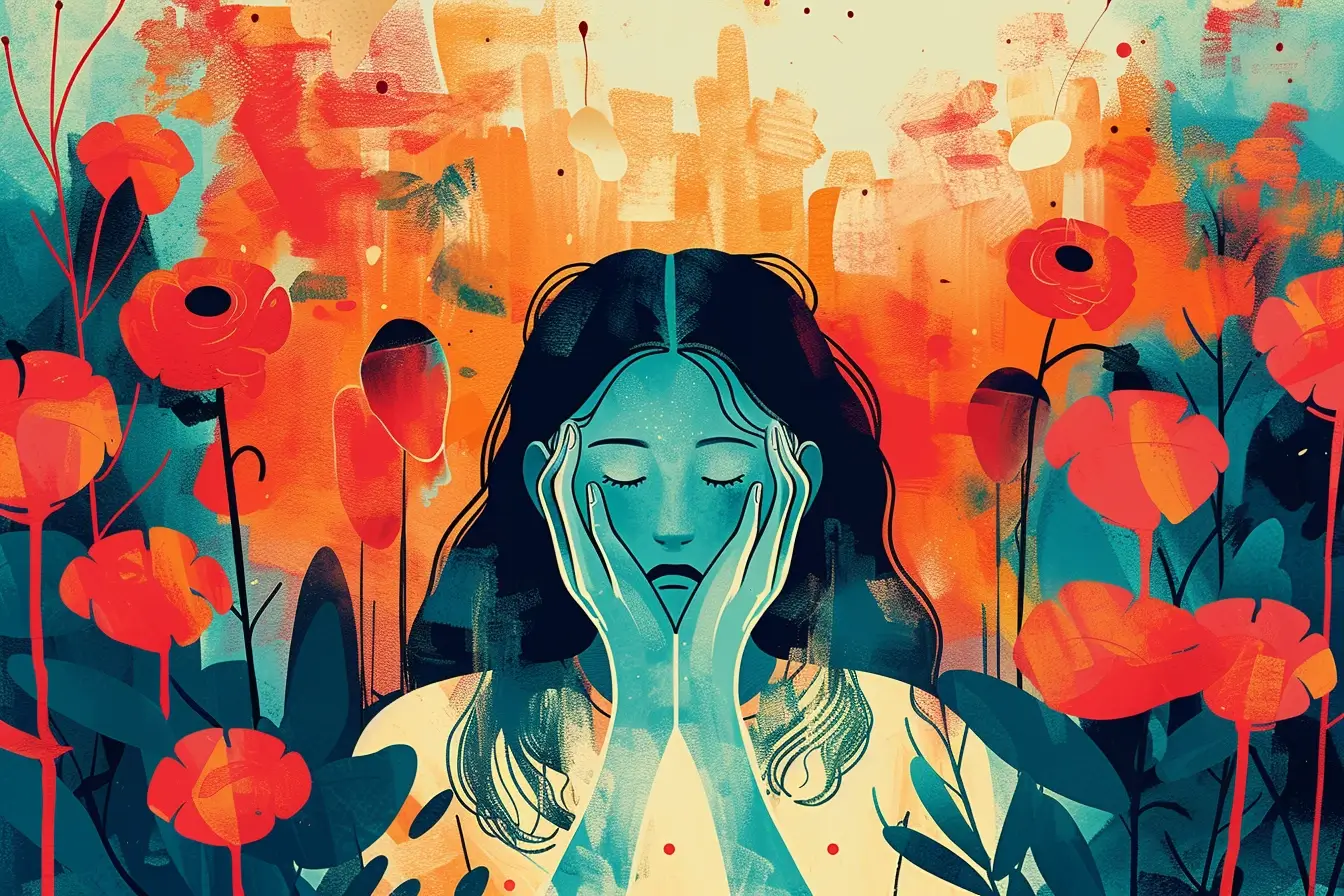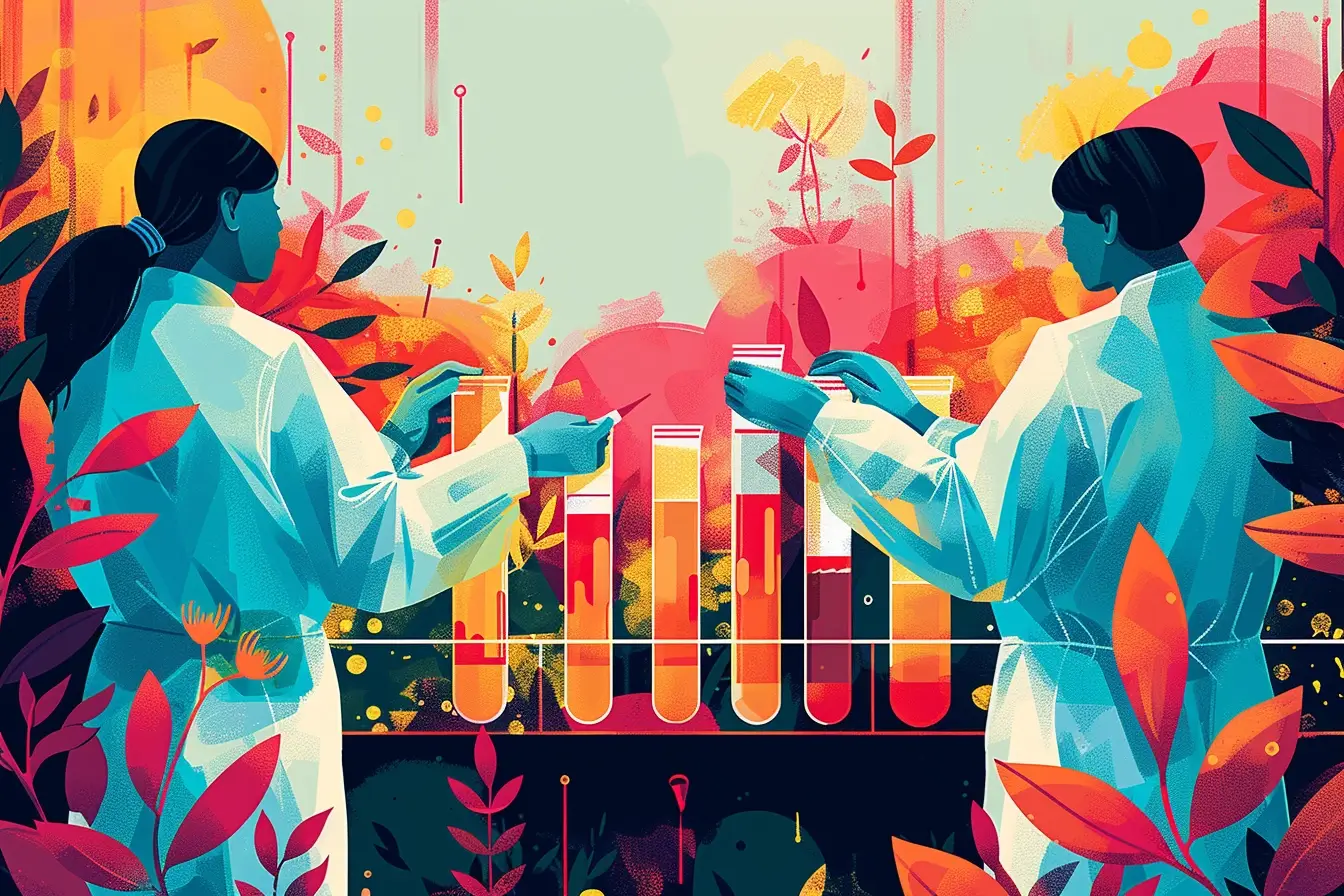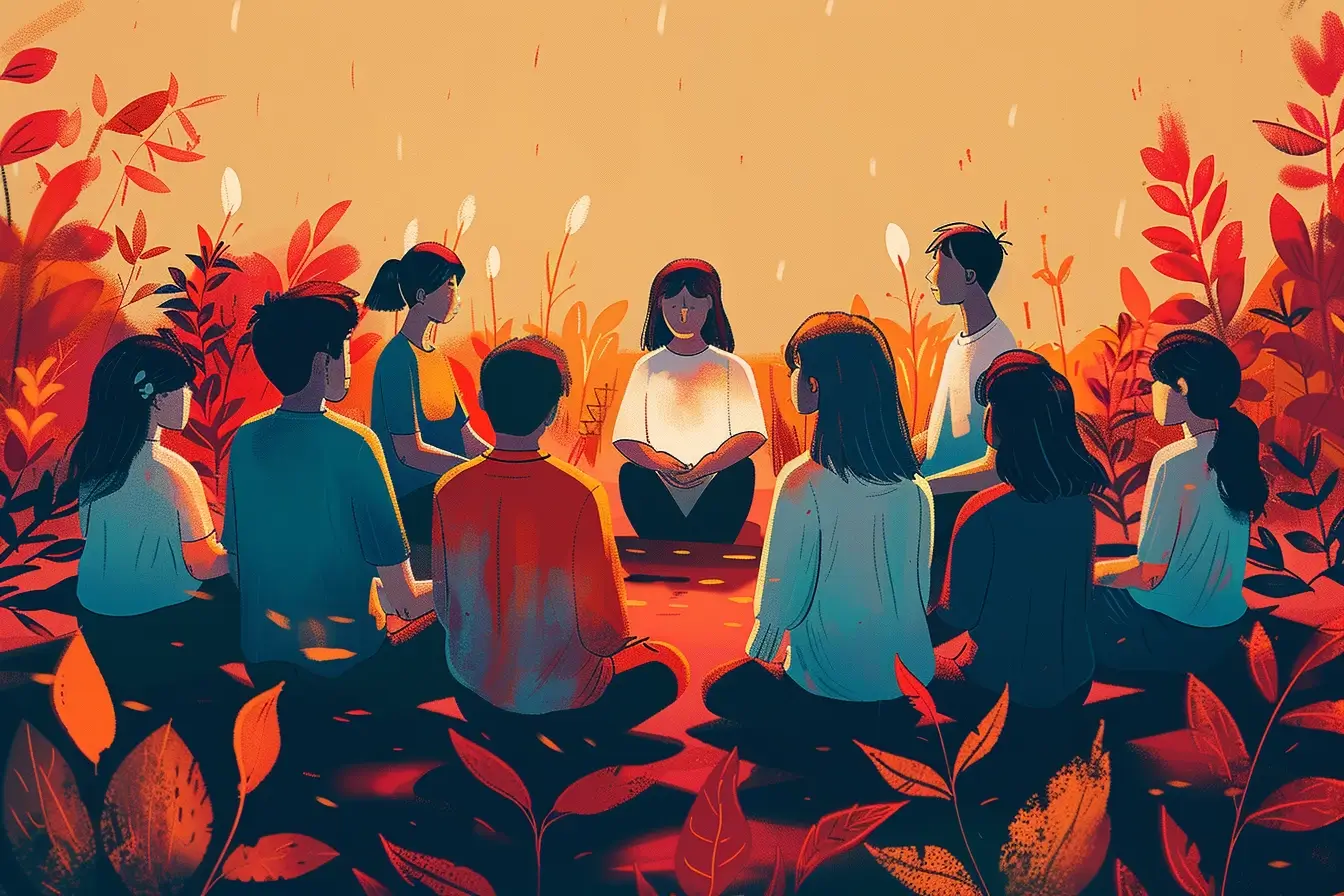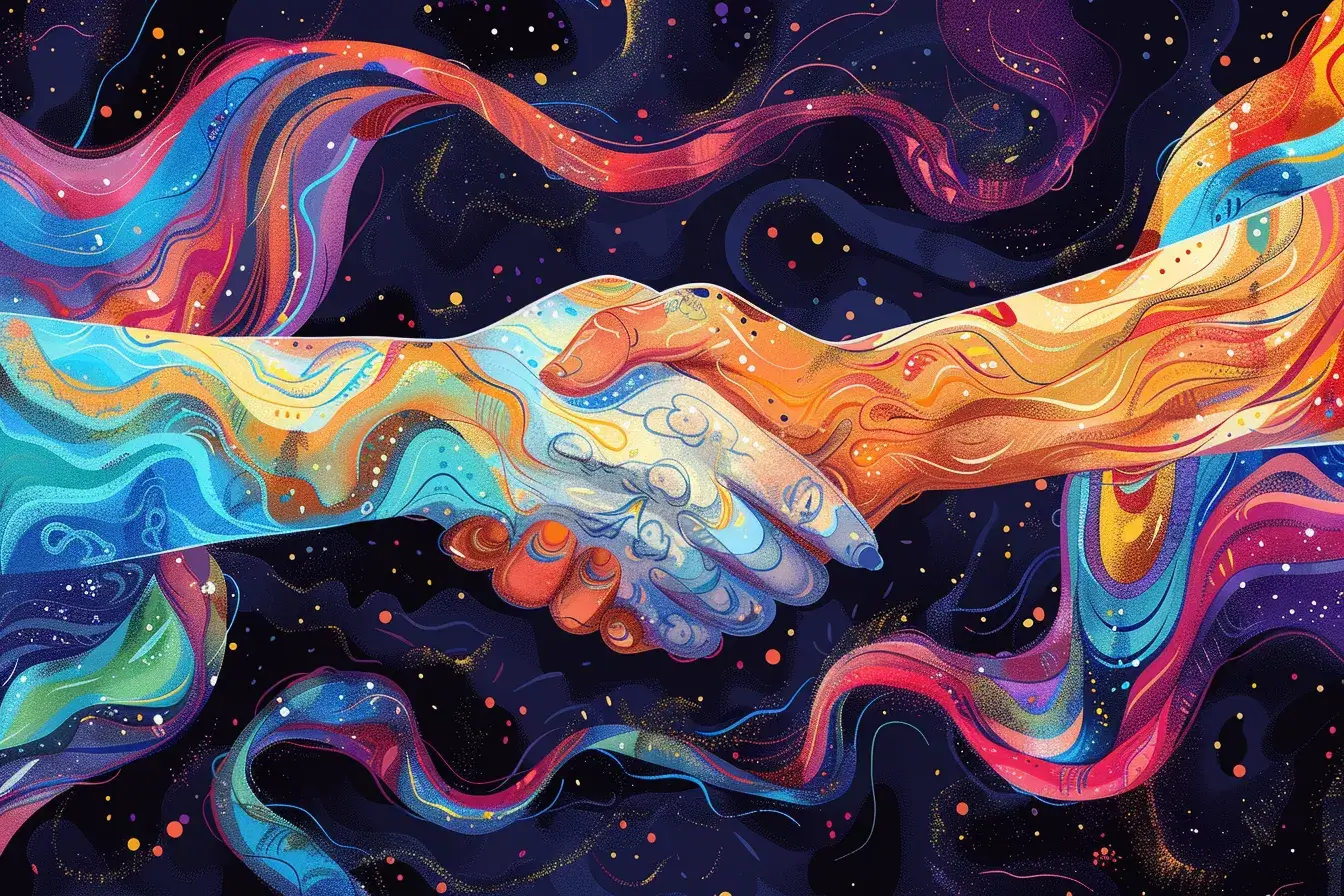Safe Psychedelics Use: Harm Reduction Best Practices
Being aware of potential drug-related harm and knowing how to stay safe while using psychedelics can help reduce risks and help to ensure positive experiences. Harm reduction involves education about the safe use, testing, and effects of psychedelics. There is also an emphasis on the importance of a supportive community and a comfortable and secure environment.
Using practical strategies and methods to promote safety and reduce negative experiences can help ensure a more constructive and beneficial journey. Aspects of safety and harm reduction for psychedelic use include, but are not limited to: (1)(2)(3)(4)
Organizations like the National Harm Reduction Coalition, the Fireside Project, and the Zendo Project are committed to providing educational resources and helping to implement these strategies. Along with their education and support around drug safety and harm reduction, they also highlight the importance of recognizing and respecting the rights of individuals who use psychedelics. (1)(2)
Family History and Contraindications

While psychedelics may potentially improve some physical and mental health conditions, it is important to be aware that they can also cause an increased risk of harm in those with certain conditions or using specific medications. (4)
Individuals with a personal or family history of certain mental or physical health conditions, or those taking prescribed medications, should consult with a medical professional before taking psychedelics.
Physical health
As some psychedelic substances tend to increase heart rate and blood pressure, individuals with certain physical health conditions are at an increased risk of harm. These can include: (5)(6)
Mental health
In some cases, psychedelics can exacerbate symptoms of preexisting mental health conditions. As such, they may not be safe for individuals with conditions or symptoms such as: (4)(5)(7)
Medications
Many psychedelic substances, such as LSD, ayahuasca, and psilocybin impact levels of the neurotransmitter serotonin. Taking psychedelics may not be suitable for individuals who are prescribed serotonergic medications, including: (4)(8)
Combining these medications with psychedelics can increase the risk of serotonin syndrome, a potentially severe condition caused by dangerously high levels of serotonin. (8)
Serotonin syndrome caused by psychedelics is rare, but it is advisable to speak to a healthcare provider if on antidepressants before taking psychedelics. (6)
Preparation and Harm Reduction Education

Education and preparation are important aspects of harm reduction and can significantly contribute to beneficial psychedelic experiences. Understanding and preparing for substance use can reduce potential risks to physical and psychological well-being, including: (1)(2)
Many organizations are available to attend parties, events, and festivals, where they can provide education and information on these subjects.
For example, Zendo Project and Dance Safe are organizations that attend festivals and events to discuss harm reduction techniques with attendees before use. They also provide information and resources relating to safe drug use, drug testing, health, and sexual safety. (2)(3)
These organizations also provide workshops and education sessions online and in person, the purpose of which is to teach individuals about safe psychedelic practices, provide information on how to help friends struggling with bad experiences, and answer questions about psychedelic use. (1)(9)
Know the Psychedelic Substance
A crucial part of preparing for psychedelic use is education about the substance. This includes understanding how it will affect mood, perception, or physical sensations. Having an idea of the effects that are likely to occur can help prevent surprising or unexpected experiences that could cause distress. (10)(11)
Reading guides or listening to trusted podcasts about psychedelic use can help develop a better understanding of specific drug experiences. (12)(13)
The Importance of Safe Psychedelic Dosing
It is crucial to be informed about appropriate dosing. The effects of a substance will often differ from person to person, particularly individuals who are new to the drug compared to those who have experience with it. (10)
It is usually a good idea when taking a substance for the first time to take a very small dose initially. This can allow the effects of the drug to be experienced at a milder level. After the first dose, individuals may gradually increase their doses in a safe and supportive environment. Taking a large dose before understanding the effects could contribute to an unpleasant experience. (13)
Moderating dosage may support a more positive experience while reducing the risk of harmful consequences.
Administration
Education about substance use also includes information about safe administration. Psychedelics are typically ingested, inhaled nasally, smoked, vaped, or administered intravenously. The method of administration can impact the effect and safety of the substance. (14)
Examples of administration methods include:
01
Psilocybin
Ingested (mushrooms, edibles, teas)
02
DMT
Vaped, ingested (via liquid administration or as the psychedelic component in ayahuasca)
03
LSD
Ingested (in the form of laced paper), smoked, vaped
04
Ketamine
Inhaled nasally, taken orally, IV administration
05
MDMA
Ingested (in the form of pills or powder wrapped in thin paper and swallowed), inhaled nasally
Other factors to take into consideration:
Awareness and understanding of this information can be key to a safe and enjoyable experience. (15)
Managing a Bad Psychedelic Experience

Sometimes people can have a negative or challenging experience when taking psychedelics, which is often referred to as a bad trip. This could include: feeling afraid or anxious, experiencing distressing perceptions, and/or uncomfortable sensations. These experiences have the potential to have a lasting effect on an individual, especially if they bring up harmful emotions or memories. In some cases, a bad trip may require additional support such as counseling to process fully. However, they may also have the potential to provide an opportunity for growth and learning. (16)
For example, a study using quantitative interviews of 50 Norwegian psychedelic users looked at the power of storytelling when dealing with a bad trip. It found that participants were often able to process a bad trip through narrative sense-making (storytelling) and that sharing their experiences could help integrate them into their life stories. (17)
It can be beneficial for individuals to know how to help themselves through a bad experience, though help and guidance from an expert is recommended. Some tips that may help with this include: (2)(9)(16)
01
Introspection:
It can be helpful to examine the experience and process negative feelings that arose during and after your journey. This is often best done with a therapist or integration coach.
02
Ask for help:
If you are with a guide or tripsitter, they may be able to provide support throughout a challenging experience.
03
Moving to a different environment:
Moving to a place with new sounds, sights, lighting, or people may help ease the discomfort of a bad experience.
04
Considering or discussing bad feelings:
Having a conversation about distressing experiences may help form a different perspective and create curiosity, interest, or trust. Speaking with experienced psychedelic users may be beneficial, though discussing negative feelings with a trained professional is recommended.
05
Noises or distractions:
Some people find it helpful to hum, sing, dance, or reset themselves via another physical expression (such as stretching or breathing deeply). This can shift focus onto a new or more positive experience, and help reduce negative feelings.
06
Orientation:
Sometimes people feel disoriented or confused about time or where they are. It can be helpful to have an object that feels grounding, to know what time it is, or to find a recognizable or comforting setting. Examples include setting meeting spots with friends, and wearing a watch or an object like a necklace that has personal meaning.
07
Mindfulness or breathing techniques:
Meditative exercises like mindfulness or breathwork may help bring you back to the present, creating distance from negative thoughts or experiences.
Safer Psychedelic Substance Use and Drug Testing

Potency and Purity
The purity and potency of a drug can greatly affect both the user’s journey and the chances of a negative or even harmful experience. Often, it is difficult to know exactly how pure or potent a substance is before taking it. Being unaware of the purity and potency of a psychedelic substance can contribute to unnecessary risks, harmful effects, or unpleasant experiences.
01
Purity:
The purity of a substance refers to how much of the desired drug it contains. For example, a drug that contains no other substances is 100% pure. In contrast, if the drug is mixed with another substance or mixing agent, it is less pure. (3)
02
Potency:
The potency of a substance refers to its strength. For example, LSD is often supplied on a small piece of blotting paper. It is almost impossible to know exactly how much of the drug is on each piece of paper. An individual might be told that it contains 100mcg when it actually contains 200mcg, meaning that the dose is far more potent than expected. (13)
It’s not always possible to test the purity and potency of psychedelics, many tests can detect the presence of other substances. This allows for informed decision-making around psychedelic use and dosage. (3)
Fentanyl
Fentanyl is a synthetic opioid prescribed by medical professionals. It is also produced and used illicitly. It is roughly 100 times stronger than morphine and 50 times stronger than heroin. Because it is inexpensive to produce, fentanyl is often mixed with other drugs, such as cocaine, heroin, and methamphetamines. There have also been reports of fentanyl being mixed with psychedelic substances such as MDMA.(18)(19)
Because of its extreme potency, a small dose of fentanyl can cause severe and even life-threatening effects, particularly if individuals are unaware that they are taking it. Although fentanyl is not typically mixed with classic psychedelics such as psilocybin or LSD, it has been found in MDMA. In 2022, three school girls were hospitalized after consuming ecstasy pills laced with fentanyl, as just one example. MDMA samples have also been found to be contaminated with other substances such as amphetamines (including meth), dextromethorphan (DXM), and ketamine.(18)(19)(20)(21)
Fentanyl test strips can check for the presence of fentanyl in a substance, helping to reduce potential harm and overdose.(22)
Drug Testing
Several organizations, including Dance Safe, Test Your Poison, and Test Kit Plus offer drug testing services including at-home test kits and lab testing. Substance testing can take place in a variety of settings, including: (3)(22)
01
At an event:
Some organizations will attend events with drug testing kits or machines and offer free testing.
02
At home:
Individuals can purchase test kits to use at home. This includes test strips, which check for the presence of a specific drug, and reagents (substance that acts on another in a chemical reaction), which can help to detect suspicious reactions in a sample.
03
In a lab:
Individuals can send samples of their substance to a lab, where accurate and specific testing can take place. This can determine exactly what a substance contains and in what quantities. Many organizations can provide lab testing, some of which can be found on our harm reduction resources page.
Being aware of the contents of a substance can help reduce harm, allow individuals to make informed decisions, and promote safe and moderated substance use.
Designating a Tripsitter, Guide, or Therapist

Having a sober person to act as a tripsitter, guide, or therapist, is often vital to individuals wishing to get the most out of psychedelics and non-ordinary states of consciousness in a safe and controlled way. (10)(22)(23)
01
Tripsitter:
A tripsitter can be a friend or acquaintance who remains sober while the individual undertakes their psychedelic journey. They should have experience with psychedelics, specifically the ones being used. There are guidelines for tripsitting that should be followed to ensure a safe experience.(25)
02
Guide:
A guide may be a spiritual facilitator, such as a traditional healer, who will have experience with the substance and guiding others through these journeys. They will use their knowledge and expertise to help prepare the individual and the setting, perhaps performing a ceremony or providing spiritual guidance. Guides may have training in certain traditions or religious backgrounds that incorporate psychedelics. Or, they may be life coaches trained in psychedelic facilitation, or professionals who have underground experience in guiding psychedelic journeys.
03
Therapist:
A therapist is a licensed professional with qualifications and training in mental health and well-being. A therapist working in this capacity should also have training in psychedelic facilitation, with experience in managing mental and physical symptoms that may emerge, such as trauma-related issues.
04
Psychedelic Integration Coach:
Psychedelic integration is the process in which an individual engages with, works through, processes, and makes sense of a psychedelic experience, intending to incorporate learned outcomes into their daily lives. A psychedelic integration coach may not be a licensed professional but can have extensive training in psychedelic integration and wellbeing. They can help by guiding integration for mental well-being and personal growth.(26)
How They Can Help Your Psychedelic Experience
A tripsitter, guide, or therapist will be a sober person accompanying and supporting the individual before, during, and immediately after their non-ordinary state of consciousness. This may help ensure physical comfort, prevent or manage any unpleasant or distressing emotions, provide reassurance, and maintain safety. (23)(24)
Utilizing a guide can help individuals feel at ease with their psychedelic experience, particularly those who are experiencing one for the first time. They can also help create a more positive or enlightening experience and contribute to the healing process. (10)
Vetting
It is important that individuals feel comfortable with the person who will act as their guide or therapist, as this can significantly impact the quality and outcome of the experience. If the person who will be performing this role is unknown to the individual, it may be a good idea to meet with them and understand their plan for the experience.
Questions that might be useful to ask beforehand include: (27)
01
Is there a good personal connection or sense of comfort?
If there is a sense of unease or discomfort around the person when the individual is sober, it is likely that this will be amplified during an altered state of consciousness and will be detrimental to the experience.
02
What is their experience in this role?
If the person has very little experience performing this role or cannot talk openly about their previous sessions, this is likely to be a bad sign. It is also good to have recommendations from trusted people or for them to have detailed reviews or feedback.
03
What is their experience with taking the substance?
Many people who act as guides will have a long history of using the substance before learning how to guide others. Ask them about their own experiences with psychedelics and if they have any insights they are willing to share.
04
What are their qualifications or training?
Depending on the role the person is performing, it is a good idea to be clear about their knowledge and training. This may ensure that the individual will be guided safely and that a challenging or distressing situation will be managed appropriately. Ask about specific qualifications, training programs, or certifications that can demonstrate their ability and expertise.
05
What is the plan?
It is often beneficial for individuals to be clear on the preparation and plan for the experience, such as where it will take place, the substance and dosage being used, what they can expect, and what safety precautions are in place.
06
Are client reviews available?
It may not always be possible to speak to past clients due to confidentiality, but there should be some indication or evidence of other individuals having a positive experience.
07
What are the boundaries around touch?
Some guides may use non-sexual touch during their ceremonies, such as hand-holding, while others may choose not to use touch at all. It is important to be very clear about the boundaries on this, both for the guide and the individual undertaking this experience. Be sure to set clear expectations before beginning the process.
The Importance of Set and Setting

Set and setting describes the internal and external environment in which substance use takes place. Simply put:
A psychedelic experience can be significantly influenced by the set and setting. Negative emotions or an anxiety-provoking environment can lead to distress and increased risks, while a calm, supportive, and pleasant environment may heighten positive effects. (10)(14)
Taking time to prepare the set and setting may increase the benefits, safety, and comfort of a psychedelic experience. This includes: (2)(10)(11)
01
Intention:
Setting a framework or goal for the treatment can help you prepare for the experience. Example: “I’d like to explore the root of these anxious feelings.” While having an intention can be helpful, it is also beneficial to go into the experience with an open mind and willingness to be exposed to an unknown situation.
02
Aesthetics:
Different types of lighting, art, and imagery. For example, soft lights can create a relaxing environment and spiritual art can put users in an introspective state of mind.
03
Sounds:
Different types of ambient music, sounds of nature, and the absence of urban sounds such as cars.
04
Smells:
Scented candles, incense, or flowers.
05
Comfort
Blankets, cushions, different types of clothing, temperature, food and beverages.
06
Access:
Individuals might want to be inside in a comfortable environment or outside amongst nature, so ensuring access to different settings can be beneficial.
07
Support:
A sober guide, a friendly and compassionate group, and a place to go for emotional support in the event of emotional distress.
08
Safety:
Being in an altered state of consciousness can cause individuals to be unaware of potential dangers, so creating a safe setting can be an important part of a safe and fruitful experience. This can include access to medical support and being away from roads with no high platforms or danger of falling.
Psychedelic Peer Support and Integration

Peer support and integration can be significant factors in the quality of an individual’s psychedelic journey. Being part of a community that promotes empathy, compassion, and support can contribute to a positive and healing experience, helping individuals feel safe and reassured throughout the experience. (1)(10)
Psychedelic integration is a process in which a person revisits and actively engages in making sense of, working through, translating, and processing the content of their psychedelic experience. Through intentional effort and supportive practices, this process allows one to gradually capture and incorporate the lessons and insights into their lives, thus moving toward greater balance and wholeness, both internally (mind, body, and spirit) and externally (lifestyle, social relations, and the natural world). (24)(26)
Integration can include: (4)(10)(26)
Integration can be a long process that requires contemplation, discussion, support, and practice, with the idea of making positive changes. It can take place within group settings, such as integration circles and workshops, as a solitary reflection, or in a one-on-one setting, such as with a therapist. Each can be beneficial to the exploration, sharing, and integration of new experiences and ideas. (11)(26)
Some practices that may help with the integration process include:
- National Harm Reduction Coalition. (2020). Principles of Harm Reduction. Retrieved from https://harmreduction.org/about-us/principles-of-harm-reduction/
- Zendo Project. (2023). Psychedelic Peer Support Education. Retrieved from https://zendoproject.org/education/
- Dance Safe. (2023). Drug Checking. Retrieved from https://dancesafe.org/drug-checking/
- Pilecki, B., Luoma, J.B., Bathje, G.J., & Narloch, V.F. (2021). Ethical and Legal Issues in Psychedelic Harm Reduction and Integration Therapy. Harm Reduction Journal, 18, 40. Retrieved from https://doi.org/10.1186/s12954-021-00489-1
- Frecska, E. (2007). Therapeutic Guidelines: Dangers and Contraindications in Therapeutic Applications of Hallucinogens. In T. Roberts, M. Winkelman (Eds.) Psychedelic Medicine (p.69-95). Retrieved from https://doi.org/10.13140/RG.2.1.2364.8888
- Medical Contraindications to “Classic” Psychedelic Use. (n.d.). Psychedelics.ucsf.edu.https://psychedelics.ucsf.edu/blog/medical-contraindications-to-classic-psychedelic-use
- Vargas, M.V., Meyer, R., Avanes, A.A., Rus, M., & Olson, D.E. (2021). Psychedelics and Other Psychoplastogens for Treating Mental Illness. Frontiers in Psychiatry, 12. Retrieved from https://doi.org/10.3389/fpsyt.2021.727117
- Foong, A.L., Grindrod, K.A., Patel, T., & Kellar, J. (2018). Demystifying Serotonin Syndrome (or Serotonin Toxicity). Canadian Family Physician Medecin de Famille Canadien, 64(10), 720–727. Retrieved from https://www.ncbi.nlm.nih.gov/pmc/articles/PMC6184959/
- Dance Safe. (2023). About Us. Retrieved from https://dancesafe.org/about-us/
- Palmer, M., & Maynard, O.M. (2022). Are You Tripping Comfortably? Investigating the Relationship Between Harm Reduction and the Psychedelic Experience. Harm Reduction Journal, 19(1), 81. Retrieved from https://doi.org/10.1186/s12954-022-00662-0
- Byock, I. (2018). Taking Psychedelics Seriously. Journal of Palliative Medicine, 21(4), 417–421. Retrieved from https://doi.org/10.1089/jpm.2017.0684
- Psychedelics.com (n.d). Psychedelics Resources. Retrieved from https://www.psychedelics.com/resources
- Dance Safe. (2023). LSD. Retrieved from https://dancesafe.org/lsd/
- Alcohol and Drug Foundation. (Updated 2023). Psychedelics. ADF. Retrieved from https://adf.org.au/drug-facts/psychedelics/
- Ontario Harm Reduction Network. (2021). Safer Swallowing and Snorting. OHRN. Retrieved from https://ohrn.org/wp-content/uploads/2021/06/Connecting_Section3_Safer-Snorting-Swallowing_Pg78-81.pdf
- Hilden, N., Woolfe, S., & Connell, D. (2023). LSD: A Comprehensive Guide to Having a Good Trip. Psychedelics.com. Retrieved from https://www.psychedelics.com/guides/lsd-and-acid/
- Gashi, L., Sandberg, S., & Pedersen, W. (2021). Making “bad trips” good: How users of psychedelics narratively transform challenging trips into valuable experiences. International Journal of Drug Policy, 87(102997), 102997. https://doi.org/10.1016/j.drugpo.2020.102997
- Centers for Disease Control and Prevention. (Revised 2023). Fentanyl Facts. CDC. Retrieved from https://www.cdc.gov/stopoverdose/fentanyl/
- Ecstasy Laced With Fentanyl: Georgia’s Growing Party Drug Problem. (n.d.). RadioFreeEurope/RadioLiberty. https://www.rferl.org/a/georgia-fentanyl-ecstasy-drugs-clubs-opiods-deaths/32084524.html
- Twitter, Instagram, Email, & Facebook. (2022, June 2). After 3 teens overdose, school districts warn of fentanyl-laced ecstasy pills. Los Angeles Times. https://www.latimes.com/california/story/2022-06-02/after-3-teens-overdose-school-districts-warn-of-fentanyl-laced-ecstasy-pills
- A Guide to Adulterants, Bulking Agents and Other Contaminants Found in Illicit Drug. (n.d.). ResearchGate. https://www.researchgate.net/publication/235912814_CUT_A_Guide_to_Adulterants_Bulking_Agents_and_Other_Contaminants_Found_in_Illicit_Drug
- National Harm Reduction Coalition. (2020). Fentanyl. Retrieved from https://harmreduction.org/issues/fentanyl/
- Wilde, A. (2023). How Guides Help You Through a Psychedelic Experience. Psychedelic Passage. Retrieved from https://www.psychedelicpassage.com/how-guides-help-you-through-a-psychedelic-experience/
- Gorman, I., Nielson, E.M., Molinar, A., Cassidy, K., & Sabbagh, J. (2021). Psychedelic Harm Reduction and Integration: A Transtheoretical Model for Clinical Practice. Frontiers in Psychology, 12, 645246. Retrieved from https://doi.org/10.3389/fpsyg.2021.645246
- Janikian, M. (2019, December 16). How to Trip Sit Someone on Psychedelics. DoubleBlind Mag. https://doubleblindmag.com/trip-sit-lsd-psilocybin/
- Bathje, G.J., Majeski, E., & Kudowor, M. (2022). Psychedelic Integration: An Analysis of the Concept and its Practice. Frontiers in Psychology, 13. Retrieved from https://doi.org/10.3389/fpsyg.2022.824077
- Psychedelic Association of Canada. (2023). How to Find an Ethical and Skilled Therapist. PAC. Retrieved from https://www.psychedelicassociation.net/find-an-ethical-therapist19
More Guides:
Elevate Your Knowledge
Join our free newsletter for psychedelic news, culture, education, and more.
By subscribing you agree to our Terms of Service and Privacy Policy.
Disclaimer | In Crisis?
In Crisis?
If you are in crisis or contemplating self-harm or suicide, please call 988 or visit 988Lifeline.org, which provides free and confidential emotional support to people in suicidal crisis or emotional distress 24/7 in the United States. An extensive list of International suicide prevention hotlines can be found there. Remember: You are needed, you deserve to be here, and you are not alone. Reach out, and do not give up.
Having a Challenging Trip?
If you are experiencing a difficult psychedelic event, or still need help processing one, call or text 62-FIRESIDE. The Fireside Project offers free emotional support during or after a psychedelic experience. You can also download their app. Their services are completely confidential, and their staff is rigorously trained, compassionate, and knowledgeable regarding psychedelics. You can also contact SAMHSA’s National Helpline at (800) 622-HELP (4357). Their confidential helpline is available 24/7 in English and Spanish for individuals and family members experiencing emotional distress or crisis.
Additional support resources can be found in the Zendo Project directory. The Zendo Project was founded in partnership with the Multidisciplinary Association for Psychedelic Studies. Their extensive list of harm reduction resources, emotional support services, and peer support hotlines offer a vast array of tools to help you move through a challenging experience and come out the other side feeling empowered and secure.
Having a Medical Emergency?
If you or a loved one are experiencing a medical emergency and require immediate attention, please dial 911 (USA) immediately.
Are You a Veteran Having a Medical Emergency?
If you are a veteran experiencing a difficult trip or crisis, please contact (800) 273-8255 and Press 1. This will connect you to the Veteran Crisis Line. Their hotline is staffed by experienced personnel, many of whom are also veterans. A trained responder will answer your call 24/7 to help you through a crisis, anxiety, or thoughts of self-harm.
Emotional and Crisis Support for the LGBTQIA+ Community.
Members of the LGBTQIA+ community may face unique and difficult situations during a challenging psychedelic experience. If you need emotional or crisis support, dial (888) 688-5428 or visit LGBThotline.org. Their hotline is designed for people of all ages and staffed by a dedicated team of highly trained volunteers from all parts of the LGBT+ community. They also offer a dedicated line for LGBT+ seniors that you can reach at (888) 234-7243.
Be Wary of Fentanyl-Contaminated Drugs.
The United States is experiencing a synthetic opioid epidemic that has claimed thousands of lives due to street drugs being adulterated with other drugs, such as fentanyl. Fentanyl is an incredibly powerful and deadly narcotic, with doses as low as two milligrams (a dose so small it could fit on the tip of a pencil) being potentially deadly. While it is never recommended to consume any illicit substances, it is critical that you or the people you know test any drugs you may ingest for fentanyl. Several non-profit harm reduction organizations, such as DanceSafe, offer fentanyl testing strips and at-home drug testing kits.
Medical Disclaimer
The information we provide is not intended to be a substitute for professional medical advice, diagnosis, or treatment. It should not be used in place of the advice of your physician or other qualified healthcare provider. Some individuals with preexisting mental health conditions should not use psychedelics. Always consult with a trained medical professional about your specific healthcare needs.
Are Psychedelics Legal?
Most classical and non-classical psychedelic drugs are prohibited in the United States under the Controlled Substances Act of 1970. This family of chemical compounds are considered Schedule I drugs, the most tightly controlled and generally illegal class. This includes psilocybin (aka Magic Mushrooms), Methylenedioxymethamphetamine (MDMA), Lysergic acid diethylamide (LSD), N,N-Dimethyltryptamine (DMT), Ayahuasca, Ibogaine, Peyote, 2C-B, Cannabis, and others. Ketamine is also controlled under the same act and listed as a Schedule III drug. Due to the illegal or controlled nature of these drugs, it is not advised that you attempt to purchase, source, or otherwise possess any Scheduled substances, as you may be at risk of civil and criminal penalties.
Legal Disclaimer
The information provided on this website is intended for informational and harm reduction purposes only and does not constitute medical or legal advice. Nor is this information, or any journalistic stories, anecdotes, visual or artistic material intended as a replacement or supplement for medical or legal advice. It is important to understand that using any psychedelic compounds from the streets has significant risks and is unlikely to produce the promising results emerging in some clinical trials which involve particular dosing and purity, along with specific, carefully crafted psychotherapy in a safe, controlled environment. Various psychedelics purchased illegally often are adulterated with other, possibly harmful substances, making it difficult and not advisable to self-medicate for PTSD, anxiety, depression, or for the treatment of other mental health issues.

 Naomi Carr
Naomi Carr Dr. Elizabeth Shuler, PsyD.
Dr. Elizabeth Shuler, PsyD. PALOMA LEHFELDT, MD
PALOMA LEHFELDT, MD






 Ross Dillon
Ross Dillon 
 David Connell
David Connell

